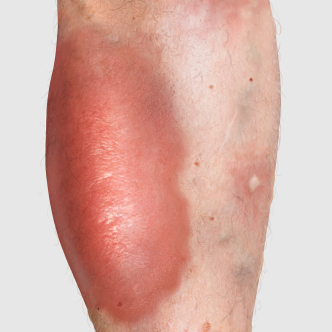Patients with neutropenia: The safety and efficacy of SIVEXTRO in patients with neutropenia (neutrophil counts <1000 cells/mm³) have not been adequately evaluated. In an animal model of infection, the antibacterial activity of SIVEXTRO was reduced in the absence of granulocytes. Alternative therapies should be considered when treating patients with neutropenia.
Clostridioides difficile–associated diarrhea (CDAD), ranging from mild diarrhea to fatal colitis, has been reported with nearly all systemic antibacterial agents, including SIVEXTRO. Evaluate all patients who present with diarrhea following antibacterial drug use. Careful medical history is necessary because CDAD has been reported to occur more than two months after the administration of antibacterial agents. If CDAD is suspected or confirmed, antibacterial use not directed against C. difficile should be discontinued, if possible.
Development of drug-resistant bacteria: Prescribing SIVEXTRO in the absence of a proven or strongly suspected bacterial infection or prophylactic indication is unlikely to provide benefit to the patient and increases the risk of the development of drug-resistant bacteria.
Adverse reactions: The most common adverse reactions (≥2%) in adults for SIVEXTRO are nausea (7%), headache (5%), diarrhea (4%), vomiting (3%), and dizziness (2%).
In adult patients receiving SIVEXTRO intravenously, infusion- or injection-related adverse reactions including but not limited to: phlebitis, injection- or infusion-site pain or swelling, injection-site reaction, erythema, or induration, and infusion-related reaction occurred (4%).
The most common adverse reactions (>2%) in pediatric patients 12 years of age and older are phlebitis (3%) and increased hepatic transaminases (3%).
Drug interactions with BCRP substrates: SIVEXTRO (when administered orally) can increase the plasma concentrations of orally administered Breast Cancer Resistance Protein (BCRP) substrates and the potential for adverse reactions. Monitor for adverse reactions related to the concomitant BCRP substrates if coadministration cannot be avoided.
Before prescribing SIVEXTRO, please read the accompanying Prescribing Information. The Patient Information also is available.



